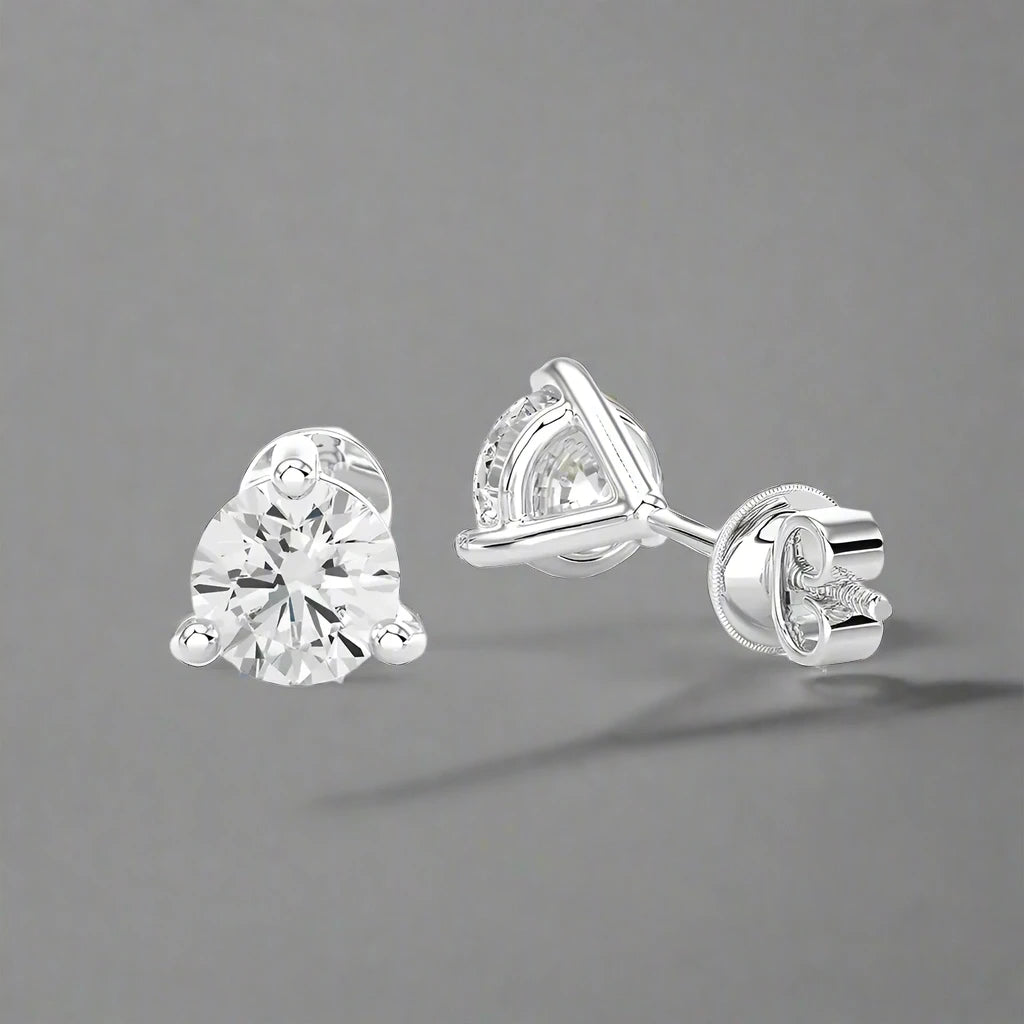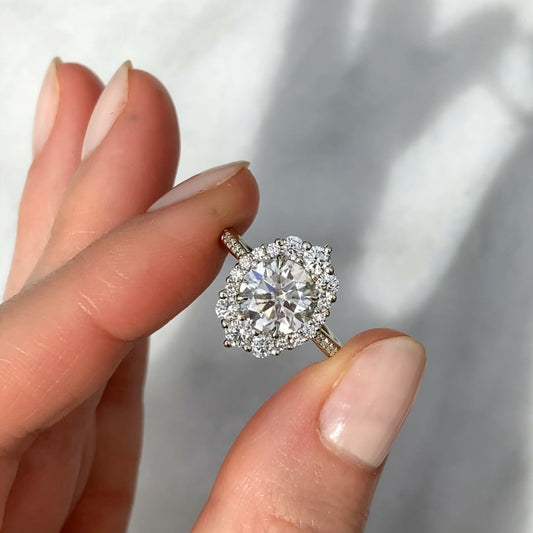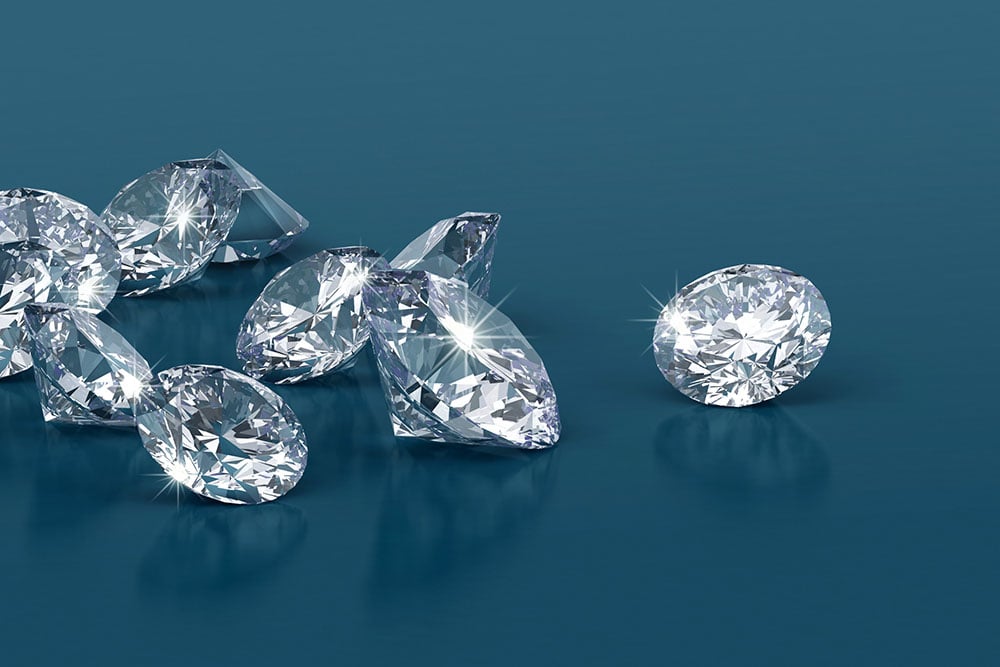
Diamond vs Real Diamond: Understanding the Key Differences
When it comes to choosing the perfect gemstone for an engagement ring or other fine jewelry, the debate between lab grown diamond vs real diamond often comes upBoth options offer stunning beauty and brilliance, but they come with distinct differences that are important to considerAs more people become aware of the environmental and ethical issues surrounding traditional diamond mining, lab-grown diamonds are gaining popularity as an alternative to natural diamondsIn this article, we will explore the differences between lab-grown diamonds and real diamonds, examining their characteristics, cost, environmental impact, and more.
What is a Lab-Grown Diamond?
A lab-grown diamond is a diamond that is created in a laboratory using advanced technology that replicates the natural processes that occur in the Earth’s crustThese diamonds are chemically, physically, and optically identical to mined diamonds, which is why they are often referred to as “real diamonds” those in the industryLab-grown diamonds are made using one of two methods: High Pressure High Temperature (HPHT) or Chemical Vapor Deposition (CVD)Both techniques involve recreating the extreme conditions that lead to the formation of diamonds, resulting in stones that have the same hardness, brilliance, and fire as natural diamonds.
When comparing lab-grown diamond vs real diamond, the key difference is their originWhile real diamonds are formed over millions of years beneath the Earth’s surface, lab-grown diamonds can be produced in a matter of weeks, offering a faster and more sustainable alternative to traditional diamond mining.
What is a Real Diamond?
A real diamond, also known as a natural diamond, is formed deep within the Earth’s mantle over millions of yearsNatural diamonds are created through intense heat and pressure, which causes carbon atoms to bond in a crystalline structureThese diamonds are then brought to the Earth’s surface through volcanic eruptions, where they are mined and cut into gemstones for use in jewelry.
Real diamonds are prized for their rarity, natural origin, and historical significanceThey are often seen as a symbol of luxury, love, and commitmentThe process of mining real diamonds can have significant environmental and ethical consequences, however, leading some consumers to seek out more sustainable alternatives, such as lab-grown diamonds.
Lab-Grown Diamond vs Real Diamond: Appearance and Quality
When it comes to appearance, the difference between lab-grown diamond vs real diamond is virtually indistinguishable to the naked eyeBoth diamonds possess the same brilliance, sparkle, and fire due to their identical chemical compositionThe 4 Cs of diamond quality—cut, color, clarity, and carat weight—apply to both lab-grown and real diamonds, meaning both types of diamonds are graded using the same standards.
The cut of the diamond refers to how well it has been shaped and faceted to maximize its brillianceBoth lab-grown and real diamonds can be cut into various shapes, including round, princess, cushion, and ovalWhen comparing the two, there is no visible difference in the way they sparkle or shine, as both types of diamonds reflect light in similar ways.
The color of a diamond is graded on a scale from D (colorless) to Z (light yellow or brown)Both lab-grown and real diamonds can range in color, with higher-quality diamonds being more colorlessSimilarly, the clarity of the diamond refers to the presence of any internal inclusions, with both lab-grown and real diamonds being graded based on their clarity.
Overall, the appearance and quality of lab-grown diamonds are virtually identical to that of real diamonds, making them an appealing alternative for those seeking the beauty of a diamond without the high cost.
Lab-Grown Diamond vs Real Diamond: Cost
One of the most significant differences between lab-grown diamonds and real diamonds is the costNatural diamonds are much more expensive due to their rarity, the costs associated with mining, and the demand for these precious stonesIn contrast, lab-grown diamonds are generally more affordable because they can be produced in a controlled environment without the need for mining or transportation costs.
The price of a lab-grown diamond can be up to 40-50% lower than that of a comparable real diamond, depending on factors such as size, quality, and cutThis cost difference makes lab-grown diamonds an attractive option for those looking to purchase a larger or higher-quality diamond without breaking the bank.
For those on a budget, lab-grown diamonds offer an excellent way to get a stunning, high-quality stone at a fraction of the price of a mined diamond.
Explore stunning, ethically sourced diamond jewelry at novitadiamonds.comFind the perfect piece that blends elegance and brilliance.
Lab-Grown Diamond vs Real Diamond: Environmental Impact
The environmental impact of diamond mining is a major concern for many consumersMining natural diamonds requires significant amounts of land to be excavated, often causing deforestation, soil erosion, and water pollutionAdditionally, the mining process uses vast amounts of energy and resources, contributing to environmental degradation and carbon emissions.
Lab-grown diamonds, on the other hand, are created in a controlled laboratory environment, which requires far fewer resources and causes minimal environmental harmBecause no mining is involved in the production of lab grown diamonds, they are considered to be a more sustainable and eco-friendly option.
For consumers who are concerned about the environmental impact of their jewelry purchases, lab-grown diamonds provide a way to enjoy the beauty of a diamond without contributing to the environmental destruction associated with traditional diamond mining.
Lab-Grown Diamond vs Real Diamond: Ethical Considerations
Ethical concerns surrounding diamond mining have been a topic of discussion for many yearsIn some regions, diamond mining has been linked to human rights abuses, child labor, and unsafe working conditionsThe term “blood diamond” refers to diamonds that are mined in conflict zones, where they are used to fund armed conflicts and violence.
Lab-grown diamonds offer a solution to these ethical concerns, as they are produced in a controlled environment without the exploitation of workers or funding of conflictBy choosing a lab-grown diamond, consumers can feel confident that they are making a responsible and ethical purchase.
Real diamonds, while still widely regarded as a symbol of love and luxury, may be associated with ethical concerns depending on their sourceThe Kimberley Process, which was established to prevent the trade of conflict diamonds, aims to ensure that diamonds are sourced ethicallyHowever, not all diamonds are guaranteed to be conflict-free, which is a consideration for many buyers.
Lab-Grown Diamond vs Real Diamond: Longevity and Durability
Both lab-grown diamonds and real diamonds are extremely durable, ranking 10 on the Mohs scale of hardnessThis makes both types of diamonds highly resistant to scratching and ideal for everyday wearWhether you choose a lab-grown diamond or a real diamond, you can be assured that your gemstone will last for generations, retaining its beauty and brilliance over time.
In terms of longevity and durability, there is no significant difference between lab-grown diamonds and real diamonds, as both stones are virtually indestructible and will withstand the test of time.
Lab-Grown Diamond vs Real Diamond: Which One Should You Choose?
Choosing between lab-grown diamond vs real diamond ultimately depends on your personal preferences, budget, and valuesIf you are looking for a more affordable and sustainable option that offers the same beauty and quality as a natural diamond, a lab-grown diamond may be the right choice for youLab-grown diamonds are ethically sourced, environmentally friendly, and can offer significant savings compared to their natural counterparts.
On the other hand, if you prefer the historical significance, rarity, and natural origin of a mined diamond, then a real diamond may be the better optionReal diamonds are still considered the traditional choice for engagement rings and fine jewelry, with a lasting appeal that many buyers find irresistible.
Conclusion
In conclusion, the debate between lab-grown diamond vs real diamond is based on factors such as cost, ethical considerations, environmental impact, and personal preferenceBoth options offer stunning beauty, durability, and timeless appealLab-grown diamonds provide an affordable, sustainable, and ethical alternative to real diamonds, while mined diamonds hold a sense of tradition and rarityUltimately, the decision comes down to what matters most to you in your jewelry purchase.








